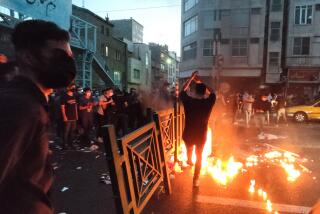Readers React: Similarities between Iran today and 1920s Russia
- Share via
To the editor: Doyle McManus correctly observes Iran’s “contradictory” foreign policy — the release of 10 American sailors, regular cooperation on a range of issues and “chants of ‘death to America.’” (“Iran’s dilemma: a country or a cause,” Opinion, Jan. 24)
He points out that “there’s a historical precedent” for dealing peacefully with a hostile power. But his reference to a “half-century of global rivalry with the Soviet Union” and, later, with China misses the correct historical analogy.
It’s true the U.S. negotiated with the Soviet Union for 40 years, but that was after Josef Stalin had died in 1953. The true parallel with Iran’s “country or cause” goes back to the period right after the Bolshevik revolution, in 1917-23.
Then, Russia struggled between its revolutionary impulses and its need for survival. Eventually this split became institutionalized between the Comintern and the ministry of foreign affairs. But the struggle between the “ideologists” and the “pragmatists” was dangerous for the West. Nudging Russia toward cooperation in the international system was difficult and took decades.
Surely Iran presents the same challenges, and we must react with patience, firmness and a strong military capability.
Larry T. Caldwell, Beaumont
The writer teaches Russian foreign policy at Occidental College.
Follow the Opinion section on Twitter @latimesopinion and Facebook
More to Read
A cure for the common opinion
Get thought-provoking perspectives with our weekly newsletter.
You may occasionally receive promotional content from the Los Angeles Times.









